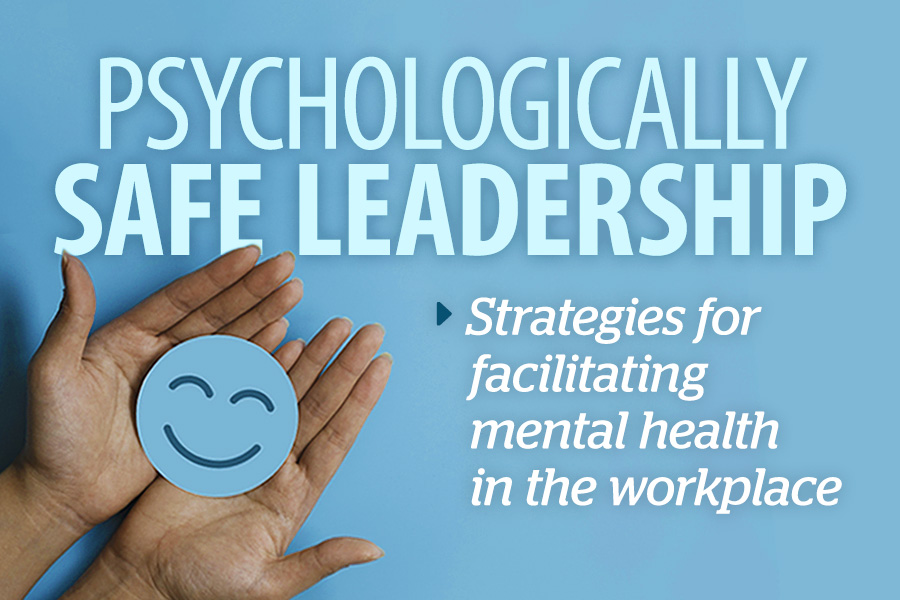
Becoming a psychologically safe leader requires mastering relationship management
By Bill Howatt and Troy Winters
By Bill Howatt and Troy Winters

EDITOR’S NOTE: ‘Psychologically Safe Leadership: Strategies for facilitating mental health in the workplace’ is a web series in partnership with Dr. Bill Howatt of Howatt HR Consulting in Ottawa, and Troy Winters, senior health and safety officer at the Canadian Union of Public Employees (CUPE) in Ottawa.
A psychologically safe leader is fully aware that every interaction with an employee, peer, or customer is an opportunity to leave a positive or negative impression.
These leaders are conscious of how their behaviour can impact another person’s experience. Leaders focused on their personal needs and ego may not fully appreciate the leadership wake — the response they create as they manage, not unlike a vessel’s effect as it moves through the water.
Relationship management begins with a leader being open and aware of how their actions can positively or negatively impact others. Other behaviours also affect their experience, as relationship management is a two-way interaction.
“Leaders must pay close attention to their wake, as it influences the kind of relationships they create.” — Dr. Bill Howatt
It is helpful for a leader to focus on their intention and actions. Intention does not matter in relationships as much as how intent is received.
A leader may think they are doing all the right things, but have a blind spot where they are missing the mark, straining employee trust and weakening relationships.
A psychologically safe relationship is where an employee and leader feel safe to be transparent and vulnerable.
Relationship management is dynamic. Leaders must always pay attention to this account and be mindful of their deposits and withdrawals.
Building psychologically safe relationships means that you have many more deposits than withdrawals, and this is the same for any authentic relationship that is valued and enjoyed.
Psychologically Safe Workplace Awards provide employers tools, data on mental health
The tips below are crucial for building psychologically safe relationships in the workplace:
Be intentional in your leadership
From the time you wake up, be deliberate and aware of how your choices and actions impact your employees’ experience.
The way you give instructions, ask questions, and create space for employees to share their points of view matters.
Inspire with positive energy
Your energy and the way you start conversations and interactions with others matter — not only the words you say but also your body language and attitude.
Good-spirited and pleasant leaders create welcoming energy that can encourage employees.
It does not take a lot of effort to be kind and polite. It shows that you value the person you are interacting with.
Build bonds with purpose
Being vulnerable is being open to accepting the possibility that you are not always right nor perfect. Creating space to own your mistakes and show you care about what your employees think builds meaningful relationship bonds.
At the core of all psychologically safe relationships is empathy — the ability to suspend judgment and understand the feelings of others. Leaders who can do this with themselves and employees build strong, psychologically safe bonds.
Anchor expectations of your team
Do not assume; clarify your expectations and ensure they are aligned and anchored to the organization’s core values and goals.
By failing to define team expectations clearly, you risk the possibility of getting the best from your employees because they are unsure of what you expect.
Being unclear about expectations can result in worry, confusion, and potential conflict within the team as people try to navigate a workplace without a map.
Develop together and check in
Explore with your employees the best way to facilitate performance check-ins and how to empower and engage them.
Though your core purpose is to instil performance and behaviour expectations, check-ins ensure employees are clear on where they are against those expectations. This is a helpful exercise to set norms and build trust.
Once expectations have been set, adhere to agreements to demonstrate you value the framework you have created with your employees. Even if organizational structures are in place, checking in ensures employees feel included and valued.
Lead by example
As a psychologically safe leader, you must be held to the same standards and expectations as your employees.
Allow employees to correct you if they see any slips in performance and expectations, to ensure you are congruent and developing good habits that model the organization’s expectations and values.
 Dr. Bill Howatt is the Ottawa-based president of Howatt HR Consulting in Ottawa.
Dr. Bill Howatt is the Ottawa-based president of Howatt HR Consulting in Ottawa.

Troy Winters is a senior health and safety officer at the Canadian Union of Public Employees (CUPE) in Ottawa.
The post Becoming a psychologically safe leader requires mastering relationship management appeared first on OHS Canada Magazine.